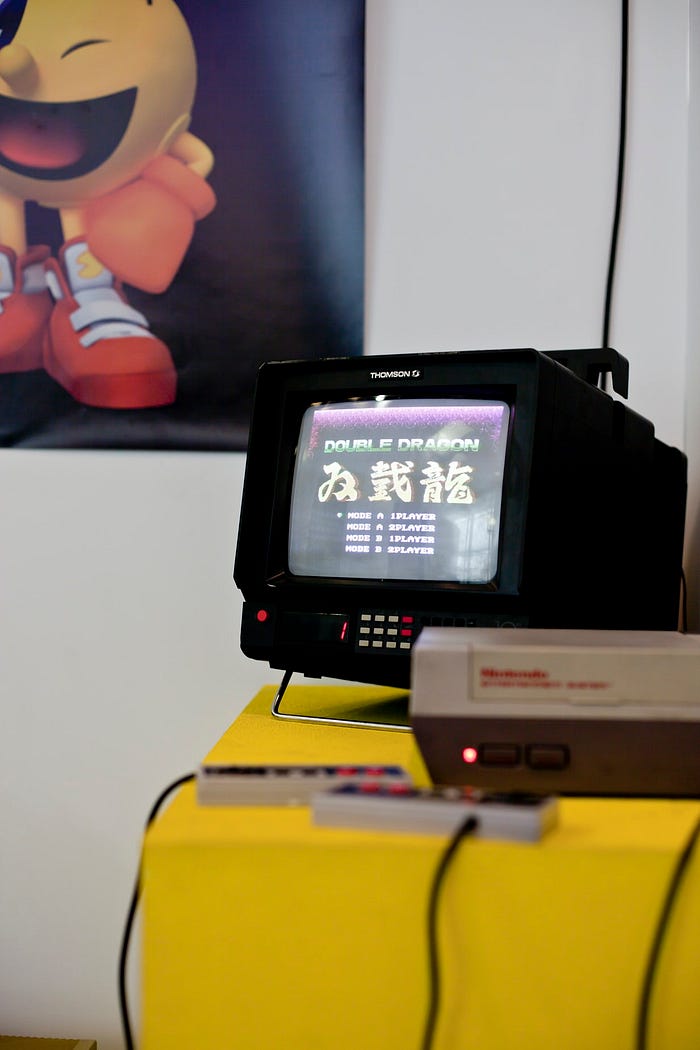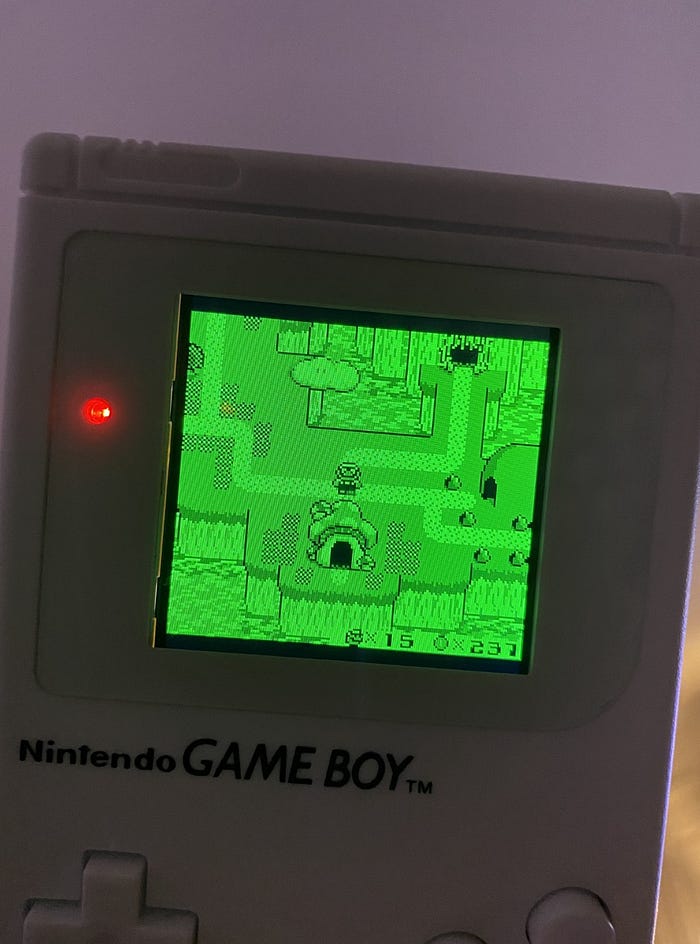Rediscovering Retro Gaming
The pleasure and pitfalls of a gamer’s mid-life crisis

Until recently, I never really understood the strong nostalgia that “older” people around me indulged in. Phrases like “music was better in my day” would always rub me the wrong way. How do you know music was better in your day if you don’t listen to anything new? Aren’t you interested in discovering new things? How can you remain stuck in one time period and never progress?
Well, I’m rapidly approaching my forties and I’m starting to better understand the power of nostalgia. But for me, there’s a very specific dimension to it. Let me give you a little context.
As a child, I was very lucky: we were largely a Nintendo family, but my parents did buy me a Sega Mega Drive II and eventually even a Mega CD. A lot of schoolmates were having passionate Nintendo-versus-Sega debates on the playground, and I was lucky enough to fence-sit in a way that was probably irritating as hell for the less fortunate.

But you know how it goes; no matter what you have, there’s always more — and being a kid who loved video games, I could never take my eyes off “the next big thing”, whatever it happened to be. I remember ravenously devouring video game magazines, especially the Official Nintendo Magazine (Australia) and Electronic Gaming Monthly (by the way, I was forever jealous of you American folk, who got the coolest stuff first — it was a little painful to see the advertising for products I didn’t have a hope of buying myself). It was always exciting to see a shiny new copy of EGM at the local newsagent, especially when they would cover big events like E3 and provide insight into upcoming consoles and games.
So, the dilemma you have as a child is that there’s all this cool stuff you want, but (for most of us), much of it is unattainable. It isn’t really until you are an adult, making your own money, that you can go out and indulge to your heart’s content. When you’re young and jobless, the only option available to you (aside from occasional pocket money) is the black art of trade-ins, and that was one of my main sources of money to buy new stuff.
Where’s the mid-life crisis bit, then?
Well, growing up, I was lucky enough to have a pretty big library of games for NES and SNES. From memory, I had upwards of 40 NES games and I took great care of them — they were actually stored in a wooden suitcase and each game had its plastic sleeve, booklet, and cardboard box. At some point — this is the really awful bit that still makes me wince — I decided to take that suitcase and trade-in the entire collection to buy something new. And you know what? I don’t even remember what I bought with the trade-in money! If you’re a retro game fan, I’m going to give you a moment to breathe deeply and take that in.
Source: YouTube.
I think that I’ve regretted that big trade-in for years, but it’s always been somewhere at the back of my mind. Maybe it was painful enough to try to repress.
I never stopped being a gamer or a game collector though. I’ve continued to buy new consoles and games, and occasionally I’ve purchased retro stuff as well. This is where the benefit of being an adult with disposable income enters the picture; I am now in a position where I can actually buy a lot of the things that I lusted after but missed out on as a child. Better still, I can (in some cases), buy mint condition items that are many years old. The more I do this, the more I understand how gamers around my age and older can end up with massive collections that require an entire room to store and display.
There’s another dimension to this, too; I can re-buy the games that I traded in all those years ago. The irony — and the pain — is that I’m now paying significantly more money than I would have received from the trade-ins at the time. I strongly suspect that if I’d kept that collection of 40+ NES games (in mint condition, complete in box), they might now be worth hundreds — or possibly thousands — of dollars. Trying to re-build that collection is likely to take years, as well as a great deal of effort (at least if I want to buy fully-boxed games rather than loose cartridges).

As time goes by, I find that I’m also seeking out more people who are interested in collecting classic games. One of my favourite YouTubers is Metal Jesus Rocks who I think expresses very similar sentiments to me in terms of how I feel about games now. Not only does he collect for nostalgic reasons, but he is both discovering and re-discovering games from eras past that he either forgot about or missed out on entirely. For instance, he often mentions that he never grew up with Nintendo and only discovered them fairly recently — but he’s become enamoured with their magic and game design wizardry. I really love the idea of experiencing something new for you but that might have been released to the market 20 or 30 years ago. It’s really never too late to appreciate great design.

Sitting here revisiting this topic in 2020, my collection has gradually expanded. I’ve picked up a range of games that I either missed out on completely, or that I wanted to own again as an adult. I’ve also started down the rabbit hole of collecting heavily-modded game consoles, like the one pictured here. It’s a “refurbished” Game Boy (the internals are all original, but it has a brand new 3D-printed shell and buttons, as well as a shiny multi-colour IPS screen — it’s currently displaying in green, but it can be changed by clicking in the volume slider).
I do have an original Game Boy, but it’s impossible to play now — the lack of backlight is just something I can’t get used to again, especially with more modern consoles like the PS Vita and Nintendo Switch featuring such gorgeous displays. So, this modded solution is absolutely perfect, because I can play an original cartridge (in this case, Super Mario Land 2) on hardware that is pretty close to original…only enhanced. There are some absolutely glorious hardware mods out there, too. A number of online stores hand-make devices like this and though they can be super expensive, they’re absolutely worth it if you want to get the very best (and most true-to-the-classic) experience possible.
I must not be alone in this mid-life crisis either, because companies like Analogue and PixelCrib have sprung up. Analogue offers insanely high-end FPGA-based consoles that are entirely new, but completely replicate the technology of classic machines. These devices are superbly crafted, and you can play your original cartridges on modern TVs looking and sounding better than ever before. And PixelCrib, as the name suggests, offers a wide range of gorgeous high-end gaming culture merchandise — from unbelievably elaborate vinyl game soundtracks to coffee table books and artwork. I mention these two companies because they seem to cater to a very specific audience. That is, people who are over thirty, who have reasonable disposable income, and who are prepared to part with serious cash to revisit classic games and franchises with suitably luxurious products.
I imagine there was no way businesses like these could have existed when I was a child, because gaming simply wasn’t an old enough medium yet. It was still relatively new, at least in terms of being a mass-market phenomenon. Video games are now just old enough that there’s a sizeable market of folks who are keen to collect vintage gaming products in the same way that car enthusiasts collect and restore classic cars.
Now, if you’ll excuse me, I’m off to dig up some CIB (complete in box) Game Boy games.
